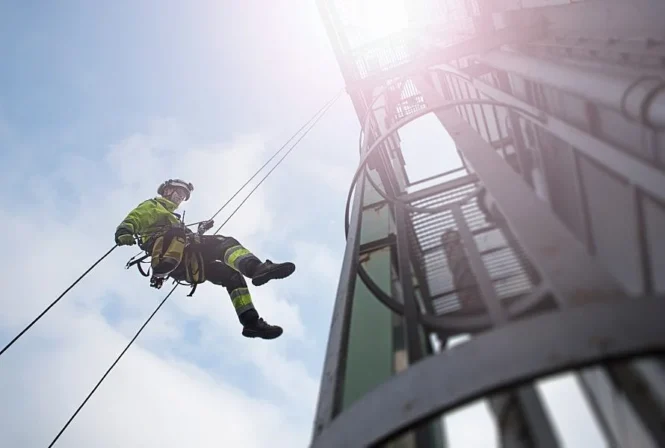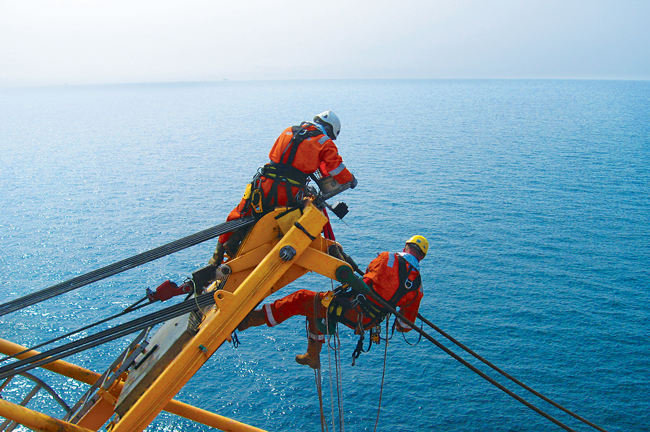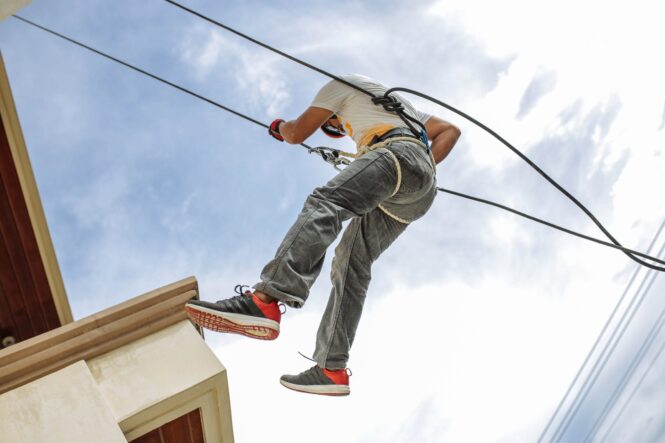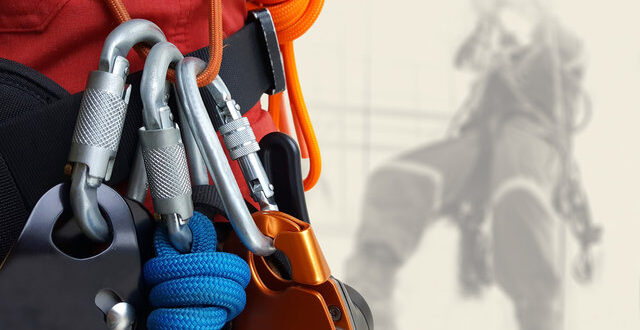Rope access is a technique used for accessing hard-to-reach areas, such as high-rise buildings, offshore structures, and industrial facilities. In Australia, rope access has become a popular method for performing various tasks, including maintenance, inspection, and construction.
Rope access technicians, also known as rope access workers or rope access operators, are trained professionals who use specialized equipment and techniques to access difficult-to-reach locations. These technicians are highly skilled and undergo extensive training to ensure they can perform their jobs safely and efficiently.
In Australia, rope access technicians work in a variety of industries, including construction, mining, oil and gas, and renewable energy. They are responsible for performing a range of tasks, including building maintenance and repairs, structural inspections, painting and coating, and welding and fabrication.
One of the advantages of rope access is that it allows technicians to access areas that are not easily reachable by other means. This means that maintenance and repair work can be carried out quickly and efficiently, reducing downtime and saving companies money. Rope access is also a safer method of accessing high-rise buildings and other structures compared to traditional methods, such as scaffolding or cherry pickers.
Rope access technicians in Australia are required to undergo extensive training and certification to ensure they can perform their jobs safely and efficiently. This includes training in rope access techniques, rescue procedures, and first aid. Additionally, technicians must follow strict safety guidelines and procedures to ensure they can operate safely in hazardous environments.
Overall, rope access is a valuable technique for accessing hard-to-reach areas and performing maintenance and repair work in various industries. In Australia, rope access technicians are highly trained and skilled professionals who play a critical role in keeping buildings, structures, and facilities running smoothly and safely.
What Is Rope Access?

Rope access is a versatile technique that can be used for a wide range of tasks in various industries. Here are a few categories of works that are commonly done by rope access technicians:
- Building Maintenance and Repair: Rope access technicians can access hard-to-reach areas of buildings, such as roofs, facades, and windows, to perform maintenance and repair work. This includes tasks such as cleaning gutters, fixing leaks, and repairing damaged cladding or masonry.
- Structural Inspections: Rope access can be used to inspect the structural integrity of buildings, bridges, and other structures. Technicians can perform visual inspections and take measurements using specialized equipment, such as drones or laser scanners.
- Painting and Coating: Rope access technicians can access areas of buildings or structures that require painting or coating. This includes tasks such as applying protective coatings to steelwork, painting high-rise buildings, and graffiti removal.
- Welding and Fabrication: Rope access technicians can perform welding and fabrication work in hard-to-reach areas, such as on offshore structures or on bridges. This includes tasks such as repairing or installing steelwork, pipelines, and tanks.
- Renewable Energy: Rope access can be used in the renewable energy sector for tasks such as wind turbine maintenance and inspections. Technicians can access the blades, nacelle, and tower of wind turbines to perform maintenance and repair work.
- Mining and Oil and Gas: Rope access can be used in mining and oil and gas industries for tasks such as inspection, maintenance, and repair work on drilling rigs, pipelines, and offshore platforms. Rope access technicians can access the areas that require maintenance and repair work safely and efficiently.
These are just a few examples of the tasks that can be performed by rope access technicians. The versatility of rope access means that it can be used in many different industries and for a wide range of application.
A Brief History

The Industrial Rope Access Trade Association (IRATA) is an international association that sets the standards for rope access training and certification. IRATA was founded in the United Kingdom in 1989 and has since grown to become the leading authority on rope access worldwide.
IRATA provides a framework for the safe use of rope access techniques, including training and certification of rope access technicians, equipment and safety standards, and guidelines for the use of rope access in various industries. The association has over 400 member companies worldwide and has trained and certified over 150,000 rope access technicians since its inception.
What does rope access training involve?

The IRATA training and certification system is based on three levels: Level 1, Level 2, and Level 3. Each level requires different levels of experience, training, and knowledge. Level 1 technicians are entry-level rope access technicians, while Level 3 technicians are highly experienced and skilled technicians who can manage complex rope access projects.
The IRATA certification process involves a combination of practical and theoretical training, followed by an assessment that tests the technician’s knowledge and skills. IRATA certification is highly respected and recognized worldwide, and many companies require their rope access technicians to hold IRATA certification.
IRATA is committed to promoting safety in the use of rope access techniques. The association provides guidelines and recommendations for the use of rope access in various industries and regularly updates its safety standards to reflect changes in technology and best practices.
In addition to its role in setting standards for rope access, IRATA also promotes the use of rope access techniques for a wide range of applications, including building maintenance, construction, and inspection work. The association regularly organizes events and conferences to promote the use of rope access techniques and to showcase the latest equipment and technology in the industry.
Overall, IRATA is a highly respected and influential organization in the rope access industry. Its standards and guidelines for training and certification have helped to ensure the safe use of rope access techniques worldwide, and its promotion of rope access has helped to make it a popular and versatile technique for accessing hard-to-reach areas.
IRATA (Industrial Rope Access Trade Association) is a respected organization in Australia for its role in setting the standards for rope access training and certification. Many of the well-known rope access companies in Australia are IRATA-accredited, and their technicians are trained and certified to IRATA standards.
IRATA’s commitment to promoting safety in the use of rope access techniques has helped to ensure that rope access is a safe and efficient method of accessing hard-to-reach areas in Australia. The association’s guidelines and recommendations for the use of rope access in various industries have also helped to promote its use and showcase its versatility.
The IRATA training and certification system is recognized and respected in Australia, and many companies require their rope access technicians to hold IRATA certification. IRATA’s certification process involves a combination of practical and theoretical training, followed by an assessment that tests the technician’s knowledge and skills.
In addition to its role in setting standards for rope access, IRATA also promotes the use of rope access techniques for a wide range of applications in Australia. The association regularly organizes events and conferences to promote the use of rope access techniques and to showcase the latest equipment and technology in the industry.
Overall, IRATA’s commitment to promoting safety and its role in setting the standards for rope access training and certification has made it a respected organization in the rope access industry in Australia. Its guidelines and recommendations have helped to ensure that rope access is used safely and efficiently, while its promotion of the technique has helped to showcase its versatility and usefulness in various industries.
Source: https://ropeboys.com.au/
 Imagup General Magazine 2025
Imagup General Magazine 2025



